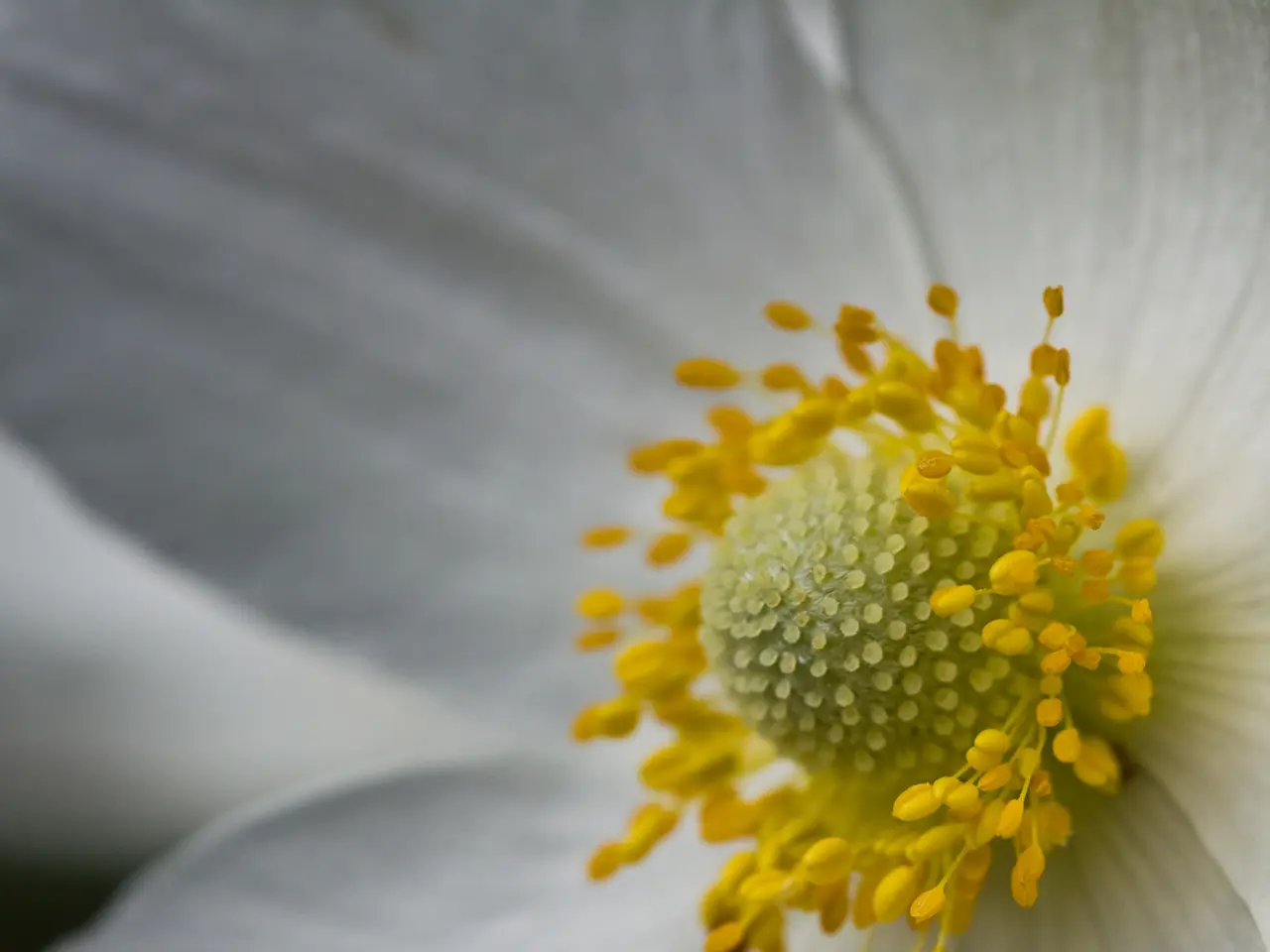Strategies for Allergy Sufferers to Shield Themselves from Ambrosia Pollen Exposure
In Germany, a plant known as Ambrosia artemisiifolia, or common ragweed, has become a growing concern. This North American native, introduced to Europe in the 19th century with sunflower-containing seed and feed mixtures, is now a common sight in gardens, agricultural areas, and along roadsides.
Ambrosia is notorious for its allergenic properties. The pollen from this plant can trigger severe health effects in humans, including hay fever, eye irritations, and allergic asthma. In fact, Ambrosia has a five times higher allergy potential than grass pollen.
The plant blooms from July to October and can produce and release pollen until it dies with the first frost. It grows on well-lit, vegetation-poor sites, such as fallow fields, new construction sites, landfills, and edges and slopes of paths, roads, motorways, and tracks. Ambrosia thrives particularly well along roadsides due to pollution stress.
One plant can produce thousands of seeds that can remain viable in the soil for years, promoting the spread of Ambrosia. Rain washes Ambrosia pollen out quickly, but it can also be carried over long distances, particularly by birds feeding on sunflower seeds.
Despite its widespread distribution, there is no systematic monitoring of Ambrosia's spread in Germany. This makes forecasts and modeling the pollen flight difficult. The environmental ministry in Baden-Württemberg stated that since 2019, systematic monitoring has no longer been possible due to the widespread distribution of Ambrosia.
Farmers and local authorities can take steps to prevent and control the spread of Ambrosia. Regular monitoring, removing plants carefully (e.g., packaging in plastic bags and disposing in residual waste rather than compost), using targeted herbicide or biological control methods, and raising public awareness are all important strategies. For larger stands, affected parties should inquire at the local city cleaning service whether the plants can be disposed of and incinerated.
Individuals can also take action to manage Ambrosia on their own property. The UBA advises pulling it out with roots and gloves before flowering, wearing a dust mask if it's already flowering, and avoiding any contact.
Unfortunately, there is no legal reporting and combating obligation for Ambrosia in any federal state, as a recent survey by ARD political magazine "Report Mainz" showed. This lack of regulation makes it even more important for everyone to take personal responsibility in managing this troublesome weed.
Climate change also plays a role in the permanent presence of Ambrosia in Germany. The plant is not very frost-resistant, but it is established in Germany, particularly in the south and southwest, in southern Brandenburg and Hesse, with a hotspot in southern Brandenburg.
Researchers have found that Ambrosia becomes particularly aggressive at roadside locations due to nitrogen dioxide (NO2) from exhaust fumes. This underscores the importance of reducing emissions to help control the spread of Ambrosia and other pollutant-sensitive plants.
In conclusion, Ambrosia artemisiifolia, or common ragweed, is a significant problem plant in Germany, not only due to its strongly allergenic pollen but also as a troublesome weed in agriculture. By taking action at both the individual and community levels, we can help manage and control the spread of this plant and protect the health of humans and the environment.
Read also:
- Understanding Hemorrhagic Gastroenteritis: Key Facts
- Stopping Osteoporosis Treatment: Timeline Considerations
- Tobacco industry's suggested changes on a legislative modification are disregarded by health journalists
- Expanded Community Health Involvement by CK Birla Hospitals, Jaipur, Maintained Through Consistent Outreach Programs Across Rajasthan







